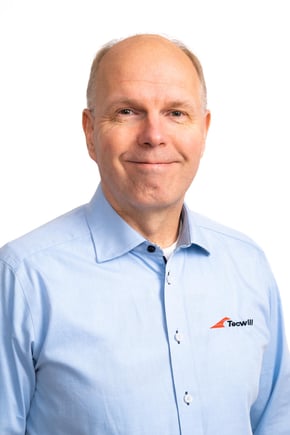For many concrete plant operators, producing fiber-reinforced concrete or shotcrete can be a daunting task. The challenges associated with incorporating fibers into concrete, such as fiber clumping, extended mixing times and wear on mixing equipment, can make this process anything but smooth. Fortunately, there is an innovative solution to these common issues – the on-conveyor fiber feed system.

Steel fiber dispensing unit ready for automatic production.
Challenges to fiber concrete production
Fiber-reinforced concrete is valued for its enhanced durability, improved crack resistance and superior performance in demanding applications like tunnel linings.
However, achieving a high-quality fiber concrete mix involves precise control over several factors, including the accurate dosing of materials, maintaining the correct slump and the uniformity of the mix.
Traditional methods of dispensing fibers into concrete often lead to extended mixing times, uneven fiber distribution and fiber clumps that can cause problems during spraying or application.

Fiber-reinforced concrete (shotcrete) is widely used in tunnel linings.
An innovative approach to fiber dispensing
Tecwill’s pioneering on-conveyor fiber feed system addresses these challenges, providing simultaneous and precise dosing of fibers and aggregates during the concrete batching process. The result? A homogenous mix evenly distributed throughout.
Proven benefits for concrete producers
This advanced fiber feed system is a fully automated solution that can handle steel, synthetic or polypropylene fibers. The exact amount of fibers is dosed directly onto the moving aggregate flow using Tecwill’s “flying” aggregate weighing system. Pre-mixing the fibers with the aggregates during the dosing process offers several significant benefits:
- Shorter mixing time: Because the fibers are premixed with the aggregates, the overall mixing time is reduced. This not only increases plant capacity but also lowers operational costs.
- Reduced mixer wear: The reduced mixing time reduces wear on the mixer, leading to longer equipment life.
- Correct slump: Shorter mixing times reduce the risk of altering the slump, keeping the slump within the desired range. Additionally, the system’s precision prevents over- or under-dosing of fibers which could affect workability.
- Improved concrete quality: The premixing process ensures consistent fiber distribution throughout the concrete, eliminating fiber clumps. This results in superior shotcrete quality.
- Fewer spraying issues: With fewer fiber clumps, the shotcrete spraying machine runs more smoothly. This leads to smoother operations overall and better final results.
- Less cement used: A well-mixed concrete blend effectively reinforced with fibers requires less cement to achieve the same structural performance as traditional concrete mixes.

When different types of fibers are used, the fiber unit can have several separate dosers.
Meeting high-demand projects with confidence
Precise and automated fiber dosing technology optimizes the entire production process. By integrating fiber dispensing into the progressive batching system, concrete producers achieve higher-quality shotcrete while reducing operational costs, using less cement and lowering carbon (CO2) emissions. The result is a more efficient and sustainable production process that meets the demands of modern construction projects.

At peak times, 1,200 m3 of concrete was produced daily for an underground railway station project down town.
The challenges of fiber concrete production don’t have to be a source of frustration. With today’s solutions, concrete plant operators can take on even the most demanding projects with ease and confidence.
Read case studies:
Case study about huge railway project
Mixing concrete for more than 1100 windmills of Europe’s biggest wind farm
Ask us more!
